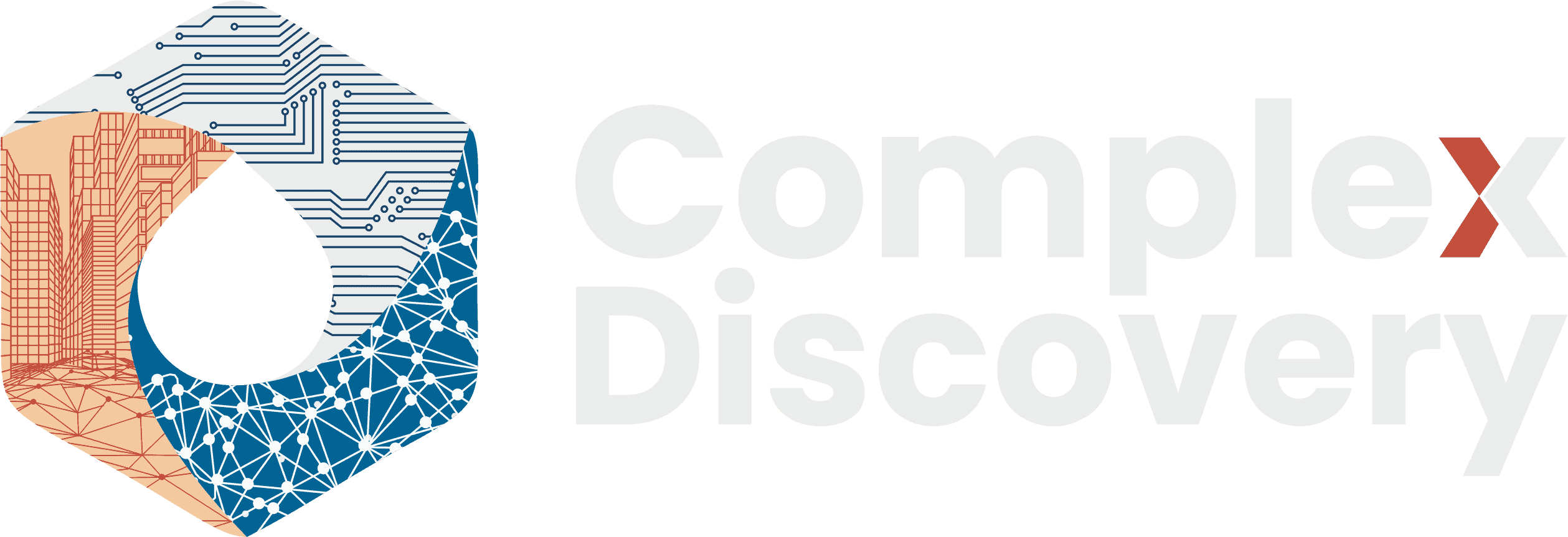Editor’s Note: September 2025 marked a newsworthy month for our industry, with the European Union finalizing transformative GDPR enforcement reforms while cyber incidents from Copenhagen to Castle Bromwich exposed critical vulnerabilities in both digital infrastructure and manufacturing operations. This month’s edition captures the convergence of regulatory evolution, market transformation, and emerging threats that are reshaping how organizations approach information governance, cybersecurity, and legal technology.
From Estonia’s practical implementation of AI governance to the sobering lessons of the Jaguar Land Rover cyberattack, these stories illustrate how policy, technology, and security challenges are increasingly interconnected. Our comprehensive eDiscovery pricing analysis reveals an industry in transition, while historical perspectives on technology adoption remind us that measured implementation often trumps rapid deployment.
As we close the month, the threads connecting regulatory harmonization, pricing pressures, and security imperatives have never been clearer. These aren’t isolated developments—they’re part of a larger transformation that demands both strategic thinking and operational excellence from legal and technology professionals.
Content Assessment: Five Great Reads on Cyber, Data, and Legal Discovery for September 2025
Information - 94%
Insight - 92%
Relevance - 94%
Objectivity - 93%
Authority - 95%
94%
Excellent
A short percentage-based assessment of the qualitative benefit expressed as a percentage of positive reception of the recent article from ComplexDiscovery OÜ titled, "Five Great Reads on Cyber, Data, and Legal Discovery for September 2025."
Industry Newsletter
Five Great Reads on Cyber, Data, and Legal Discovery for September 2025
ComplexDiscovery Staff
September 2025 delivered watershed moments that will reshape how organizations approach cybersecurity and compliance. From the EU’s first major GDPR enforcement overhaul in seven years to a manufacturing cyberattack that paralyzed a major automaker for weeks, these five stories capture inflection points where regulatory evolution meets operational reality. Each article reveals how today’s decisions on data governance, technology adoption, and security investments will determine tomorrow’s competitive advantage.
Click any headline below to read the complete article
EU Agrees on GDPR Cross-Border Enforcement Reform: New Procedural Rules to Streamline Investigations
The European Union has reached a provisional agreement establishing binding deadlines and standardized procedures for cross-border GDPR enforcement, marking the first substantial revision since the regulation’s 2018 implementation. The reform introduces 15-month deadlines for complex privacy cases, unified complaint standards across all 27 member states, and enhanced procedural rights for both complainants and organizations under investigation. With 87% of cross-border complaints in Ireland relating to just ten major technology companies, the changes address documented bottlenecks in the one-stop-shop mechanism. The reform transforms GDPR enforcement from fragmented national procedures to predictable, harmonized processes that will require organizations to strengthen their data mapping, retention policies, and regulatory response protocols when formal adoption occurs in late 2025.
Industry Benchmarks in an Era of Transformation: The Complete Summer 2025 eDiscovery Pricing Survey
ComplexDiscovery’s comprehensive Summer 2025 eDiscovery Pricing Survey, conducted with the EDRM and featuring input from 70 industry professionals, reveals a market divided between commoditized technical services and premium human-centric offerings. Forensic collections maintain premium pricing at $250-350 per hour, while hosting has become severely commoditized, with 56% of providers charging under $10 per gigabyte monthly. Review services show clear differentiation between onsite (49% above $40/hour) and remote delivery (53% at $25-40/hour), while generative AI pricing remains highly fragmented, with 46% expressing uncertainty about per-document costs. The survey demonstrates how mature services face intense price compression while emerging technologies create both opportunity and pricing uncertainty, providing essential benchmarks for legal professionals navigating the evolving economics of electronic discovery during this transformative industry period.
Evolving Product Lifecycle Management: The Expanding Role of Product Managers and Democratized Prototyping in Legal Technology
Legal technology is experiencing a fundamental shift from sequential development to continuous innovation cycles, driven by modern Product Lifecycle Management practices and the emergence of “vibe coding” – where developers use natural language prompts to generate working code through AI. Industry projections indicate that by 2025, 70% of new applications will use low-code or no-code technologies, while 41% of businesses maintain active citizen development initiatives. Product managers have evolved from coordinators to strategic leaders who directly participate in prototyping, creating functional demonstrations rather than abstract specifications. With legal AI adoption rates jumping from 19% to 79% in just one year and up to 74% of hourly billable tasks potentially automatable, the legal sector presents unprecedented opportunities for rapid prototyping and innovation. This convergence enables legal professionals to create working solutions within hours rather than months, fundamentally closing the innovation gap between enterprise legal technology and consumer application development.
European Drone Incidents Expose Critical Gaps in Enterprise Security and Hybrid Defense
Coordinated drone incursions across European airports from September 22-26, 2025, forced temporary closures at Copenhagen and other major hubs, prompting European defense ministers to announce a comprehensive “drone wall” initiative. Danish Prime Minister Mette Frederiksen characterized the incidents as potential “hybrid attacks,” while EU Defense Commissioner Andrius Kubilius stated that “Russia is testing the EU and NATO, and our response must be firm, united, and immediate.” These developments reveal critical vulnerabilities extending beyond national defense into enterprise security, where modern drones equipped with surveillance equipment can capture facility layouts, intercept wireless communications, and observe sensitive information through aerial reconnaissance. The European response demonstrates how organizations must now think three-dimensionally about information protection, implementing aerial vulnerability assessments, updating incident response plans for drone sightings, and expanding security awareness to include the aerial threat vector that challenges traditional perimeter-based security models.
Jaguar Land Rover Cyberattack: IT/OT Breach Shuts Plants and Shakes UK Supply Chains
A cyberattack detected on August 31, 2025, forced Jaguar Land Rover to shut down global production operations for over three weeks, affecting facilities that typically produce 1,000 cars daily and threatening an ecosystem supporting more than 100,000 UK supply chain jobs. Industry analysts estimate JLR is losing up to $6.8 million daily in production value, with the breach now confirmed to have affected customer data despite initial assurances otherwise. The attack, attributed to the “Scattered Lapsus$ Hunters” group, demonstrates how cyber threats now directly translate into operational paralysis across interconnected manufacturing systems, where an IT breach can rapidly cascade into production shutdowns and supply chain disruption. The incident serves as a critical lesson for manufacturing organizations about the fragility of just-in-time operations and the need for segmented IT/OT controls, comprehensive incident response planning, and backup communication channels when primary systems fail.
Additional Coverage: Industry Analysis & Insights
Beyond our five featured articles, this month’s additional coverage provides deeper analysis on market dynamics, leadership trends, and strategic lessons from technology history that inform current decision-making.
The Human Core of eDiscovery: Review Services in the Summer 2025 Pricing Survey
Review services remain the human-intensive core of eDiscovery, accounting for 60-80% of total discovery spend, with the Summer 2025 survey revealing clear differentiation between delivery models and significant pricing fragmentation. Remote managed review has stabilized with 53% reporting rates between $25-40 per hour, while onsite review commands premiums with 49% above $40 per hour due to physical infrastructure and security requirements. Technology-assisted review (TAR) shows the least standardization, with 39% using alternative pricing models and 26% expressing uncertainty, reflecting ongoing market experimentation between bundled platform features and specialized billing. Per-document pricing remains highly fragmented across both delivery models, with 34-36% of respondents expressing uncertainty, highlighting the industry’s continued search for optimal models that balance budget predictability with fair compensation for varying document complexity in an increasingly AI-influenced market.
What Windows 95 Taught Us About Today’s Legal Tech Deployments
Windows 95’s enterprise adoption patterns from 1995 provide valuable insights for modern legal technology implementations, with only 4% of large companies migrating by year-end despite widespread evaluation – mirroring today’s cautious approach to legal tech adoption. The operating system’s revolutionary features included plug-and-play hardware integration, 255-character file naming capabilities that anticipated modern metadata management needs, and multi-user profiles that foreshadowed today’s shared workstation security requirements. Windows 95’s usability improvements reduced application launching times from nine minutes in Windows 3.1 to under one minute with the Start button, demonstrating how user interface innovation directly impacts productivity. The measured corporate adoption timeline – extensive evaluation followed by gradual deployment – remains the gold standard for legal technology implementation, where organizations must balance innovation benefits against operational risk and regulatory compliance requirements in deploying cloud-based eDiscovery platforms, AI-powered review tools, and information governance solutions.
Legal Rate Inflation Pressures Legal Tech and eDiscovery Pricing Strategies
Legal billing rates continue their upward trajectory with Am Law 25 partners now averaging $1,349 per hour and some consumer services specialists reaching $2,105 per hour, creating ripple effects throughout the legal technology ecosystem. The Wolters Kluwer LegalVIEW Insights report reveals that while the overall 2024 rate increase was 6%, timekeepers who actually raised rates averaged more than 12% increases, with early 2025 data showing continued acceleration at over 8%. These rate pressures create both opportunity and challenge for legal tech vendors, as corporate legal departments seek cost-control solutions while vendors face their own rising costs but cannot easily justify similar price increases due to substitution risk and ROI pressure. Unlike law firms that can point to talent scarcity and regulatory complexity, legal technology providers must navigate asymmetric market dynamics where direct competition, contract lock-ins, and quantifiable value expectations limit pricing flexibility, suggesting the need for performance-based pricing models that align vendor economics with client cost-control objectives.
Tallinn’s Digital Convergence: Europe’s Blueprint for AI Security Governance
Estonia positions itself as Europe’s testing ground for AI governance integration by simultaneously hosting three major international technology events in October 2025 while implementing its nationwide AI Leap program, providing 20,000 students and 3,000 teachers with advanced AI tools. President Alar Karis’s administration demonstrates practical AI governance through Estonia’s X-Road digital infrastructure connecting 929 institutions and 1,887 interfaced systems, showing how technical standards can support legal requirements while maintaining security. The convergence of the Tallinn Digital Summit, Arraiolos Group meetings, and Freedom Online Coalition discussions creates natural laboratories for observing technology governance development through diplomatic engagement and real-world implementation. Estonia’s integrated approach offers guidance for organizations struggling to align AI governance with existing information management systems, emphasizing “meaningful and responsible” AI use that supports rather than replaces human judgment – directly applicable to legal technology implementations where AI must enhance decision-making without compromising compliance or evidence integrity.
Raising The Age Ceiling: How AI Is Extending Executive Leadership
Artificial intelligence is redefining leadership longevity, with nearly 1 in 5 Fortune 500 CEOs now 65 or older and the average CEO age reaching 59.2, as AI systems serve as strategic co-pilots that amplify cognitive bandwidth and preserve intellectual capital. AI functions as a cognitive amplifier rather than replacement, filtering information and contextualizing decisions to help senior leaders maintain strategic judgment while reducing mental load – particularly valuable as research shows little productivity drop between older and younger professionals. A practical example demonstrates how a 67-year-old logistics CEO uses AI-integrated dashboards to monitor real-time shipping data and regulatory changes, enabling proactive capacity management and compliance preparation without requiring deep technical expertise. However, biological limits persist as cognitive decline affects financial decision-making and executive function, particularly after age 75, requiring organizations to implement regular capacity assessments and graduated transition models that capture executive wisdom while managing risk in this new AI-enhanced leadership paradigm.
Dealmaking with Discipline: An HSR Read on FY2025’s Final Stretch
Hart-Scott-Rodino premerger filings reached 1,902 through August 2025, with 203 filings in August representing steady, disciplined dealmaking supported by 3.3% GDP growth and cooling inflation, though tempered by a widening July trade deficit. The fiscal year pattern shows recovery from March’s regulatory adjustment trough of 89 filings (when new HSR requirements took effect) to consistent monthly increases, with the year-to-date average of 173 filings matching the prior year’s pace. The expanded 2025 HSR filing framework increases narrative and data requirements without changing which deals are reportable, naturally lengthening pre-filing preparation and intensifying reliance on clean teams and defensible information governance. For cybersecurity, information governance, and eDiscovery professionals, the enhanced filing requirements have elevated these functions from supporting roles to strategic enablers, where organizations with clean-team protocols, defensible data maps, and regulator-ready discovery pipelines are closing deals faster and responding more confidently to potential second-request reviews.
Looking Ahead
As September draws to a close, the convergence of regulatory reform, market pressures, and security challenges continues to reshape our industry landscape. The EU’s GDPR enforcement streamlining, coupled with ongoing cyber threats and evolving pricing dynamics, underscores the need for organizations to maintain both strategic vision and operational agility.
October promises continued developments as Estonia hosts multiple international technology summits, providing real-world laboratories for AI governance implementation. Meanwhile, the lessons from this month’s cyber incidents and pricing surveys will undoubtedly influence how organizations approach information governance, technology deployment, and risk management in the final quarter of 2025.
Until next month.
- Click here to view recent Five Great Reads Newsletters
- Click here to subscribe to Five Great Reads Update
September 2025 Industry Spotlight
Individuals and Organizations Mentioned in the September Edition Reporting
Individuals
- Alar Karis
- Andrej Karpathy
- Andrius Kubilius
- Kaylee Walstad
- Mary Mack
- Mette Frederiksen
Organizations
- Am Law Firms
- Arraiolos Group
- Copenhagen Airport
- Department of Justice (US)
- EDRM
- European Commission
- European Union
- Federal Trade Commission (US)
- Forbes Communications Council
- Freedom Online Coalition
- Government of Denmark
- Government of Estonia
- Irish Data Protection Commission
- Jaguar Land Rover
- Microsoft
- Scattered Lapsus$ Hunters
- Tallinn Digital Summit
- Wolters Kluwer
- X-Road
- ComplexDiscovery OÜ
About ComplexDiscovery OÜ
ComplexDiscovery OÜ is a digital publication based in Estonia, known for delivering high-quality analysis and insights at the intersection of cybersecurity, information governance, and eDiscovery. Through surveys, research, and reporting, ComplexDiscovery connects industry developments with real-world applications to support informed decision-making. Learn more at ComplexDiscovery.com.
Assisted by GAI and LLM Technologies
- An Abridged Look at the Business of eDiscovery: Mergers, Acquisitions, and Investments
- eDisclosure Systems Buyers Guide – Online Knowledge Base
Source: ComplexDiscovery OÜ



























